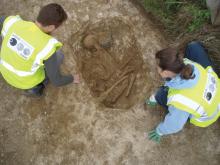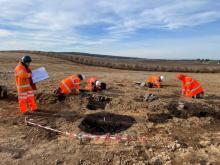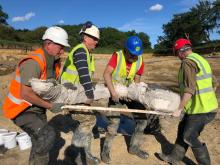Archaeological excavations at
Besthorpe assistant quarry manager Levi Liversedge said, “"It is really fascinating to see all these ancient objects coming out of the ground and giving us an insight into the lives of ordinary people many hundreds of years ago.
"Working with archaeology teams to ensure the land is screened before we progress is an important part of our commitment to responsible land management.It is pleasing that our quarrying operations at Besthorpe have given archaeologists such a great opportunity."
Aracheological investigations at the site started in 1996 and are now undertaken by the Centre for Applied archaeology (CfAA) at the
Thompson said, “Besthorpe is a very special place. The review has taken in two areas, first Ferry Lane Farm, and now Mons Pool and the pair are very different both in geology and in the archaeological evidence we have found.
"At Ferry Lane we found evidence of cattle and also of metal production for things like processing of animal hides. From these discoveries we think the site may have been used to supply by the Roman army, but we are yet to prove that. At Mons Pool we have found remnants of a number of Roman timber buildings and evidence of quite intensive farming.
"We have also found at least nine burials. In some cases only the coffin nails have survived in others there are parts of the skeleton. The remains we found last year were quite high to the surface, suggesting they may have been disturbed by modern day ploughing. In one example we found the head and the body which weren't attached but in the same grave."
The dig has not only uncovered Roman relics, Neolithic flint tools have been found along with Iron Age and Bronze Age earthenware, revealing people lived on the land, hunted and fired their own pottery hundreds of years before the Romans arrived.









